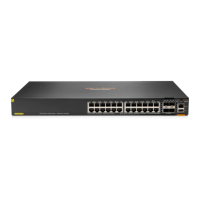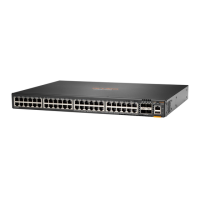280
Figure 91 L2PT network diagram
L2PT configuration task list
Tasks at a glance
(Required.) Enabling L2PT
(Optional.) Setting the destination multicast MAC address for tunneled packets
Enabling L2PT
Restrictions and guidelines
• Before you enable L2PT for a Layer 2 protocol on a port, perform the following tasks:
{ Enable the protocol on the connected CE, and disable the protocol on the port.
{ Enable L2PT on PE ports connected to a customer network. If you enable L2PT on ports
connected to the service provider network, L2PT determines that the ports are connected to
a customer network.
{ Make sure the VLAN tags of Layer 2 protocol packets are not changed or deleted for the
tunneled packets to be transmitted correctly across the service provider network.
• L2PT for LLDP supports LLDP packets from only nearest bridge agents.
• You can enable L2PT on a member port of a Layer 2 aggregation group, but the configuration
does not take effect.
• Do not enable L2PT on a port that is going to join a service loopback group. All configuration is
removed after the port joins the group.
• LACP and EOAM require point-to-point transmission. If you enable L2PT for LACP or EOAM,
L2PT multicasts LACP or EOAM packets out of customer-facing ports. As a result, the
transmission between two CEs is not point-to-point. To ensure point-to-point transmission for
the LACP or EOAM packets, you must configure other features (for example, VLAN).
Enabling L2PT for a protocol
Step Command Remarks
1. Enter system view.
system-view
N/A

